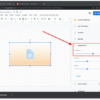How to keep your privacy secure on social media is more important than ever. Social media platforms collect vast amounts of data, and understanding the risks is crucial. This guide will explore the potential threats, show you how to secure your profiles, manage your online presence, protect your accounts from hacking, and offer platform-specific tips for staying safe.
We’ll cover everything from strong passwords to reviewing privacy settings, and provide actionable steps to safeguard your personal information online.
This comprehensive guide will equip you with the knowledge and tools to navigate the complex world of social media privacy with confidence. From understanding the risks to implementing best practices, we’ll empower you to take control of your digital footprint and keep your information secure.
Understanding Social Media Privacy Risks
Social media platforms have become integral parts of our lives, connecting us with friends, family, and the world. However, this interconnectedness comes with a price. Knowing the potential risks associated with social media use is crucial for safeguarding your privacy and personal data. This exploration dives into the various privacy threats lurking within the digital landscape of social media.The ease of sharing information online can mask the intricate ways our data is collected, analyzed, and potentially misused.
A comprehensive understanding of these practices is vital for informed decision-making regarding online interactions and data protection.
Potential Privacy Threats on Social Media Platforms
Social media platforms employ various strategies to gather user data, which can be vulnerable to exploitation. Malicious actors or even unintentional errors can lead to data breaches. Understanding these threats is paramount for proactive protection.
- Data Collection and Usage: Social media platforms collect an extensive array of data, including personal information, location history, online activity, and interactions with other users. This data is used to personalize user experiences, target advertisements, and build detailed user profiles. The scope of this data collection often extends beyond what users consciously share.
- Data Breaches: Data breaches occur when unauthorized individuals gain access to sensitive user data. This can expose personal information, financial details, and other sensitive information, potentially leading to identity theft, financial fraud, and reputational damage. Past instances of significant breaches underscore the importance of vigilance and security practices.
- Targeted Advertising: Social media platforms use collected data to tailor advertisements to individual users. While this can be convenient, it can also lead to intrusive or unwanted advertising. Users may find themselves bombarded with irrelevant or potentially harmful content.
- Phishing and Scams: Social media platforms can be breeding grounds for phishing scams and other fraudulent activities. Malicious actors may impersonate legitimate users or send deceptive messages to trick users into revealing personal information or making financial transactions.
- Third-Party Applications: Many social media platforms allow users to connect with third-party applications. These applications may have access to a user’s data, increasing the risk of unauthorized access and misuse. The extent of this access and the security measures implemented by third-party apps are crucial considerations.
Types of Data Collected by Social Media Companies
Social media platforms collect a diverse range of data to serve various purposes. Understanding the types of data gathered provides a clearer picture of the risks involved.
- Personal Information: This includes names, contact details, birth dates, and other personally identifiable information. This data is used for user profiles and communication purposes, but also for targeted advertising and analysis.
- Location Data: Many social media platforms track user locations, either through GPS or other methods. This data can reveal personal habits and movements, increasing the risk of stalking or unwanted attention.
- Online Activity: Platforms monitor user interactions, including posts, comments, likes, and shares. This activity data helps to personalize experiences and target advertising, but also creates a detailed digital footprint.
- Financial Information: While less common, some social media platforms may collect financial data, such as payment information for in-app purchases or other financial transactions. This data is highly sensitive and needs to be handled with extreme caution.
Data Breaches and Their Impact on User Privacy, How to keep your privacy secure on social media
Data breaches can have serious repercussions for individuals and organizations. The consequences can extend beyond the initial incident, impacting trust and reputation.
- Identity Theft: Stolen personal information can be used to create fraudulent identities, leading to financial losses and other serious consequences.
- Financial Fraud: Access to financial data can result in unauthorized transactions, credit card fraud, and other financial crimes.
- Reputational Damage: Exposure of private information can damage a user’s reputation and relationships, leading to social and professional repercussions.
- Legal Issues: In some cases, data breaches can lead to legal action against the affected companies or individuals.
Comparison of Social Media Platform Privacy Policies
This table compares the privacy policies of popular social media platforms. Note that privacy policies can change, so reviewing current policies is crucial.
| Platform | Data Collection Practices | Data Usage | Security Measures |
|---|---|---|---|
| Extensive collection of user data | Targeted advertising, personalized experiences | Security measures, but potential vulnerabilities | |
| Emphasis on user profile and visual data | Advertising, engagement metrics | Security measures, but potential vulnerabilities | |
| Focus on public conversations and engagement | Targeted advertising, trending topics | Security measures, but potential vulnerabilities | |
| TikTok | Vast data collection, including user interactions | Algorithmic recommendations, personalized content | Security measures, but potential vulnerabilities |
Risks Associated with Sharing Personal Information
Sharing personal information on social media carries inherent risks. Carefully consider the potential implications before posting any data.
- Location Data: Sharing precise location data can reveal personal habits and movements, potentially exposing users to unwanted attention or stalking.
- Contact Details: Sharing contact details on social media can make users vulnerable to unwanted calls, messages, or harassment.
- Financial Information: Revealing financial information on social media platforms can lead to financial fraud and identity theft.
Securing Your Social Media Profiles

Protecting your online presence goes beyond simply creating accounts. It’s about actively managing your privacy settings and security measures to safeguard your personal information and maintain control over your digital footprint. A proactive approach to securing your social media profiles is crucial in today’s interconnected world.Strong passwords and robust security protocols are your first lines of defense. Implementing these measures minimizes the risk of unauthorized access to your accounts and the sensitive data associated with them.
Protecting your privacy online is crucial, especially on social media. One aspect of this involves understanding how your data is handled. Recent findings from Google, like their debunking of redirect types myths, google debunks redirect types myths , highlight the importance of staying informed about the underlying technologies. This knowledge helps you make better choices about what you share and how you interact with platforms to maintain control over your personal information.
Taking the time to review and adjust privacy settings ensures your information is shared only with those you intend.
Creating Strong Passwords
Effective passwords are essential for protecting your social media accounts. Weak passwords are easily cracked, leaving your data vulnerable. A strong password is one that is unique to each account, complex, and memorable. Avoid using easily guessed words, dates, or personal information. Consider incorporating a mix of uppercase and lowercase letters, numbers, and symbols.
A password manager can help you generate and store strong, unique passwords across multiple platforms.
Protecting your privacy online is crucial, especially on platforms like TikTok. While you’re focusing on your social media privacy settings, remember that a well-structured TikTok marketing strategy can also indirectly boost your privacy. For example, using features like private accounts and limiting who can view your content are important, and a deep dive into how to build an effective TikTok marketing strategy in 5 steps could provide some clever tips for managing your online presence.
Ultimately, keeping your personal information safe and your online profile under control should always be your priority.
Enabling Two-Factor Authentication
Two-factor authentication (2FA) adds an extra layer of security to your accounts. It requires a second verification method, typically a code sent to your phone, in addition to your password. This significantly reduces the risk of unauthorized access even if someone obtains your password. Enable 2FA on all your social media accounts.
Reviewing and Adjusting Privacy Settings
Each social media platform offers different privacy settings. Take time to review and adjust these settings to control who can see your posts, photos, and other information. Adjusting visibility settings for your posts, photos, and other shared content allows you to manage the audience that interacts with your profile. This helps you maintain control over who can access your information.
Step-by-Step Guide to Removing Old/Unwanted Posts
Removing old or unwanted posts and information from your social media profiles helps maintain a more curated online presence. Regularly reviewing and deleting posts can be a significant step in safeguarding your privacy. Specific steps vary slightly by platform, but the process usually involves locating the post, selecting the delete option, and confirming the deletion.
- Locate the post: Find the specific post you wish to remove. This typically involves navigating to the relevant section of your profile.
- Select the delete option: Look for a delete or remove button, often near the post or image itself.
- Confirm the deletion: A confirmation prompt will often appear, ensuring you intend to delete the post.
Common Privacy Settings on Major Platforms
Different social media platforms offer varying privacy controls. Understanding these controls allows you to tailor your online presence to your preferences.
| Platform | Privacy Setting Example |
|---|---|
| Controlling who can see your posts, photos, and other information; managing friend requests; adjusting visibility of posts to specific groups or people. | |
| Adjusting who can see your posts, stories, and other content; choosing to share content with a specific group of followers; reviewing and adjusting privacy settings for direct messages. | |
| Managing who can see your tweets; adjusting privacy settings for direct messages; controlling who can follow your account. | |
| TikTok | Controlling who can see your videos; adjusting privacy settings for comments and messages; managing the visibility of your profile information. |
Privacy-Enhancing Tools and Extensions
Privacy-enhancing tools and extensions for web browsers can further bolster your online security. These tools often offer features to block trackers, control data collection, and enhance privacy settings.
- Privacy Badger: A browser extension that blocks trackers and protects your privacy online.
- uBlock Origin: A popular ad blocker that also protects against trackers and unwanted scripts.
Managing Your Online Presence
Your online presence is a reflection of you, and how you manage it significantly impacts your privacy and reputation. Controlling what information is visible to others is crucial for maintaining a safe and positive online experience. By carefully considering your online actions and the information you share, you can safeguard your privacy and manage your online reputation effectively.
Limiting Visibility to Strangers and Other Users
Controlling who sees your personal information is essential for privacy. Social media platforms offer varying degrees of privacy controls. Understanding these settings and utilizing them proactively is key. For example, adjusting profile visibility options can limit who can see your posts, photos, and other information. Reviewing friend requests and connections, and carefully considering who you interact with online, are also important steps in managing your online visibility.
This proactive approach ensures your personal details are not shared indiscriminately.
Managing Online Reputation
Maintaining a positive online reputation is important for both personal and professional reasons. Develop a strategy to manage negative comments or feedback by acknowledging and responding appropriately, while avoiding escalation or emotional reactions. Respond professionally and thoughtfully, focusing on constructive dialogue. This proactive approach can mitigate the impact of negative comments and portray a more mature and composed online persona.
Mindful Sharing of Information
Being mindful of the information you share online is paramount. Avoid oversharing personal details, such as your location, personal schedule, or sensitive information. Think before you post; consider the potential implications of sharing specific details. This cautious approach minimizes the risk of compromising your privacy and security.
Avoiding Oversharing
Oversharing personal details on social media can lead to various risks. Limit the personal information you share publicly. Avoid sharing details that could be exploited or used against you, such as your address, financial information, or detailed travel plans. Consider the potential consequences before posting any information. A cautious approach is vital for mitigating these risks.
Privacy Settings Table
| Privacy Setting | Pros | Cons |
|---|---|---|
| Strict Privacy Settings | High level of privacy protection, limited visibility to information. | Potential for reduced social interaction, difficulty in connecting with others. Might feel isolated. |
| Moderate Privacy Settings | Balance between privacy and social interaction. Easier to connect with others. | Some information might be visible to a wider audience. Risk of oversharing remains. |
| Open Privacy Settings | Increased social interaction, easy for others to connect. | Significant risk of privacy violations, exposure to unwanted attention. Vulnerable to cyberbullying and harassment. |
Protecting Your Account from Hacking

Social media has become an integral part of our lives, connecting us with friends, family, and the world. However, this interconnectedness comes with a risk: hacking attempts. Understanding how hackers operate and recognizing the signs of a potential breach is crucial for safeguarding your accounts and maintaining your online privacy.
Signs of a Potential Hacking Attempt
Hackers employ various tactics to gain unauthorized access to accounts. Recognizing these tactics is essential for preventing compromise. Suspicious activity often manifests as unusual login attempts from unknown locations, altered account settings, or messages from your account to contacts that you did not send. Be vigilant and pay attention to any changes that seem out of the ordinary.
Importance of Reporting Suspicious Activity
Social media platforms have security teams dedicated to investigating and mitigating hacking attempts. Promptly reporting suspicious activity is vital in preventing further damage. By notifying the platform, you enable their systems to take swift action to block unauthorized access and protect your account, as well as other users. Platforms typically have dedicated reporting tools and channels to facilitate this process.
Steps to Take if Your Account is Compromised
If you suspect or confirm your account has been compromised, immediate action is critical. Change your password immediately to a strong, unique one, and enable two-factor authentication (2FA) if it’s not already enabled. Immediately disable any suspicious applications or devices linked to your account. Report the incident to the social media platform and notify any contacts who may have received unauthorized messages.
Flowchart for Recovering a Compromised Account
- Suspect account compromise (e.g., unusual logins, altered settings). Report suspicious activity to the social media platform.
- Immediately change your password to a strong, unique password.
- Enable two-factor authentication (2FA) if not already enabled.
- Disable any suspicious applications or devices linked to your account.
- Monitor your account for further suspicious activity.
- If possible, download a copy of your account data.
- Contact the social media platform support for further assistance, if needed.
- If the issue persists, consult a cybersecurity professional for advanced support.
Creating Strong Passwords
Strong passwords are the first line of defense against unauthorized access. Use a combination of uppercase and lowercase letters, numbers, and symbols. Avoid using easily guessable information like birthdays, names, or common phrases. Ideally, generate unique passwords for each account. A password manager can aid in creating and storing strong passwords securely.
A strong password is at least 12 characters long, combining uppercase and lowercase letters, numbers, and symbols.
Privacy Best Practices for Specific Social Media Platforms
Navigating the digital landscape requires a nuanced understanding of privacy on each platform. Different social media sites employ varying levels of data collection and user control, necessitating platform-specific strategies to maintain your online safety. Knowing the specific privacy risks and best practices for each platform is crucial to maximizing your online security.Social media platforms collect diverse data points, from basic profile information to detailed activity logs.
Understanding how each platform uses this data and implementing appropriate privacy controls is essential. This includes recognizing potential vulnerabilities and proactively safeguarding your personal information.
Instagram Privacy Settings and Risks
Instagram’s visual focus often overshadows its privacy implications. Users frequently share photos and videos, potentially revealing personal details about their lives. Instagram’s use of location data, especially with geotagging, poses a risk of revealing precise locations. Carefully review your privacy settings to control who can see your posts, stories, and location data. Turning off location tagging for posts and stories is crucial for increased privacy.
Similarly, be cautious about the accounts you follow and the content you interact with, as this can impact your privacy.
Protecting your privacy on social media is crucial these days. One often overlooked aspect is the way websites use fonts. For example, you can learn how to make Google Fonts privacy-friendly by checking out this helpful guide: how to make google fonts privacy friendly. Ultimately, understanding these kinds of details is key to maintaining a strong privacy posture across all online interactions.
TikTok Privacy Considerations
TikTok’s algorithm-driven content delivery and rapid user growth have introduced unique privacy concerns. Users must understand that their interactions, preferences, and content viewed are collected and used to personalize their experience. The platform’s data collection practices and potential for misuse necessitate proactive measures. Review your privacy settings, be mindful of the accounts you follow, and understand the permissions you grant to apps and third-party services connected to your TikTok account.
Snapchat Privacy Best Practices
Snapchat’s ephemeral messaging and disappearing content often lead users to believe their privacy is inherently protected. However, this perception can be misleading. While messages and photos disappear, Snapchat still collects data for user profiling and analytics. To maximize your privacy, review the platform’s privacy policy carefully, be mindful of the permissions you grant, and exercise caution in sharing personal information.
Use end-to-end encryption features where available and be wary of suspicious links or messages.
LinkedIn Privacy and Professional Networking
LinkedIn, as a professional networking platform, has specific privacy concerns. Users share professional information, potentially including contact details and job titles. Review your privacy settings to control who can see your profile, your connections, and your posts. Be cautious about the information you share publicly and be aware of potential risks associated with sharing sensitive details like your work location or your company.
Platform-Specific Privacy Tips and Tricks
| Platform | Privacy Tip | Privacy Risk | Solution |
|---|---|---|---|
| Turn off location tagging for posts and stories. | Location data exposure. | Control who can see your posts, stories, and location data. | |
| TikTok | Review privacy settings and permissions. | Data collection for personalization. | Be mindful of the accounts you follow, and understand permissions you grant to connected apps. |
| Snapchat | Use end-to-end encryption features. | Data collection for user profiling. | Review the platform’s privacy policy, and exercise caution in sharing personal information. |
| Control your profile visibility. | Sharing sensitive professional information. | Be cautious about the information you share publicly and be aware of potential risks associated with sharing sensitive details. |
Staying Informed About Privacy Updates: How To Keep Your Privacy Secure On Social Media
Staying informed about social media privacy is crucial in today’s digital landscape. Privacy policies are constantly evolving, and neglecting these updates can leave your data vulnerable. Understanding how to monitor these changes and interpret the relevant documents empowers you to make informed decisions about your online presence.
Resources for Staying Updated on Privacy Policy Changes
Staying abreast of privacy policy changes requires proactive measures. Numerous resources can help you track these developments, from official social media platform announcements to dedicated privacy news outlets.
- Social Media Platform Websites: Each platform maintains its own official website, often with a dedicated privacy section. Regularly checking these pages is essential to see the latest updates to their terms and conditions and privacy policies.
- Privacy News Outlets: Reputable news sources frequently cover privacy updates, highlighting changes to policies and regulations. Following these publications provides broader context and analyses of privacy-related news.
- Government Agencies: Government agencies often release guidelines and regulations impacting digital privacy. Checking official government websites related to data protection and digital rights is essential for informed decisions about your privacy.
Monitoring Social Media Privacy Settings and Policies
Actively monitoring changes to social media privacy settings and policies is a proactive approach to maintain your online security. Regularly checking your social media profiles and understanding the changes is important to mitigate potential risks.
- Check for notifications: Social media platforms often send notifications about updates to their policies or privacy settings. Enabling these notifications is a simple way to stay updated.
- Review policy updates: Social media platforms usually announce changes to their policies, terms, and conditions. Actively reviewing these updates will help you understand the changes.
- Use browser extensions: Some browser extensions provide alerts about privacy policy changes, assisting users in proactively tracking updates across multiple platforms.
Understanding and Interpreting Privacy Policy Documents
Privacy policy documents can be complex. Understanding their content empowers you to make informed choices about your data.
- Read carefully: Privacy policy documents should be approached with a critical eye. Carefully reading and understanding the specific language of these documents is essential.
- Use online resources: Numerous online resources can provide simplified explanations of complex privacy policy documents. Using these tools will help you understand the implications of the changes.
- Seek expert advice: If you’re unsure about specific aspects of a privacy policy, seeking guidance from a legal professional or privacy expert can help you interpret the information correctly.
Importance of Regularly Reviewing Privacy Settings and Policies
Regularly reviewing your privacy settings and policies is crucial for maintaining control over your personal information. This ensures you’re always aware of how your data is being handled.
- Proactive Approach: Regular reviews are a proactive approach to safeguard your data. This ensures you’re always informed about any changes that might impact your data security.
- Maintaining Control: Regularly reviewing policies allows you to maintain control over your personal information. This proactive approach allows you to adapt your online activity to reflect your privacy preferences.
- Adapting to Changes: Social media policies are constantly evolving. Regular reviews allow you to adapt to these changes and ensure your privacy settings remain aligned with your needs.
Reputable Sources for Privacy News and Updates
Numerous reliable sources provide updates on privacy-related news and changes to policies.
- The Electronic Frontier Foundation (EFF): EFF is a well-regarded digital rights advocacy group. They often publish articles and analyses on privacy-related issues.
- Privacy Rights Clearinghouse: The Privacy Rights Clearinghouse is a nonprofit organization dedicated to protecting individual privacy rights. Their website offers a wealth of information on privacy laws and regulations.
- Wired: Wired is a well-known technology publication that often covers privacy-related issues and updates.
Closing Notes
In conclusion, protecting your privacy on social media requires a proactive and multifaceted approach. By understanding the risks, securing your profiles, managing your online presence, safeguarding your accounts, and staying informed about privacy updates, you can significantly reduce the chances of your personal information being compromised. Remember, staying vigilant and making informed choices are key to maintaining your privacy in the digital age.
This guide offers a starting point, and your ongoing vigilance is the ultimate defense.





